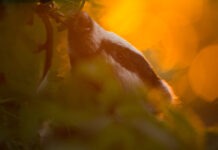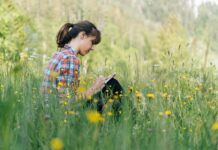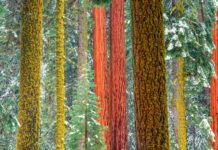
One of my resolutions this year was to learn more about food. As the foundation of human and environmental health, sustainable management of natural resources is important to me. I consider myself a steward of nature and this motivates me to consider my lifestyle in context of the impact it will have on the ecosystem—beginning with the food chain!
As much as I desire to be a garden guru growing my own crop of heirloom vegetables, my thumbs are every colour but green! So like many, I stock my pantry and fridge with foods procured at the local supermarket. This satisfies hunger well and good, but distances me from the process and care that does or doesn’t go into my produce. It also helps line the pockets of big chain establishments perpetuating agricultural practises based on profit not seasonality or sustainability. Food grown for these reasons is often tendered under a veil of ripening chemicals and pesticides to ensure large, year-round harvests, unspoiled and uniform in size and shape.
It might seem appealing to have super-sized strawberries available for a smoothie mid-winter, but do they taste good? Do they contain harmful toxins? Were they grown locally? Who made a profit (community grower or big business)? What care went into the management of land? Were the cycles of nature and other elements of an ecosystem taken into consideration? Is this a sustainable and healthy way to shop?
A Simple Solution: Get to Know Your Grower.
(Disclaimer) This will take more time than a dash to the store but is well worth the effort, profiting nature, community your health and taste-buds.
Set aside an hour to research farmers markets, local growers, community gardens and the like, making a list of resources to investigate. Then arrange a day excursion to explore and enjoy the company of growers, their knowledge will surprise you. Marvel over the diverse shapes, textures, colours, tastes and varieties of produce, harvested from local meadows, hills and open pastures. Pick-up some homemade preserves and a recipe or two. Unlike mainstream supermarkets the atmosphere is relaxed, there is a culture and tradition amongst the people and they all seem happy to pass on their wisdom and wares.
I would like to share a conversation I had recently with Jan Goroncy, a good friend and steward of nature. Jan and his wife Lesley, own and run Barrington River Organic Farm in NSW, Australia.
Life on the Land: What you can learn from a Grower
What drew you to a life on the land?
A desire to grow in an organic environment, olive trees for the health benefits of the fruit and leaves.
Is farming part of your heritage?
Yes, both my parents were on the the land prior to World War 2.
Do you use any of your parents methods in land management today?
A respect for the land and all living things.
What are the most rewarding parts of this lifestyle?
The peace that comes from living and working with nature.
Can you name a few of your favourite things?
Waking to beautiful sounds of Magpies, Kurrowongs and Willy Wag Tails that have taken up residence. Watching the sky for signs of impending weather changes. Witnessing lightning strikes and thunder during storms in spring. Observing the cattle, particularly the mums and calves and their connection with the herd. I like getting amongst them and giving them a massage down their spine.
How do you deal with drought and which jobs are most physical?
Trying to keep everything alive is a challenge, as water is required by all living things. It becomes very expensive to buy feed for our cattle and raising vegetable seedlings is difficult as the rabbits and hares are very hungry and thirsty so eat everything. Spending days on end watering fruit trees, especially young natives, whatever is still surviving in the veggie garden, is also very time consuming.
Do the lessons of the land influence your everyday actions and decisions?
The big picture is important in both areas. Long term planning is required because there are many obstacles that can come into play, for instance prolonged bad weather which prevents important work being carried out.
What do you do when this occurs?
Outside work can’t be carried out, so it’s generally maintenance and repairs to tractors & machinery. This year we harvested the garlic late October prior to the rain setting in and destroying the crop.
How does this marry with the principles of your company NTP Health Products?
The same values of integrity and carrying out steps which satisfy suppliers, our customers and our staff are carried over. The quality of our produce speaks for the efforts we put in. We are certified ‘biodynamic’ with ACO which in itself is a trademark of integrity. More and more consumers are looking and willing to pay for produce they trust comes from a place of integrity.
How do traditional methods of farming compare to modern technologies?
Chemical methods are being questioned by both the young and older farmer. Wholesome foods are grown by wholesome methods. The ‘imputs’ are the key to soil quality and health. Planting and harvesting according to the seasons and rhythms of nature, have a bearing on all life on earth.
What are some of the most successful practices?
Making a dry compost and a wet ‘fish’ compost which are applied to vegetable growing beds, garlic beds, fruit orchard and all other components which require energising. Also, implementing biodynamic principals such as BD 500.
What it is BD500?
BD500 is the major fertiliser component. We place manure from lactating cows into cow horns and bury this in a pit for 6 months, the matter we retrieve is a highly organised & energised material which then is caste or spread over paddocks in the Spring. This activity energises soil matter allowing for better quality uptake of soil nutrients into the grass.

Where do you source knowledge and support on sustainable farming?
I read a lot about biodynamic practises in books by Rudolf Steiner and magazines like Acres USA which is an excellent holistic publication.
What advice would you give those considering your way of life?
You must have passion, resources, be well organised and prepared for a lot of physical work.
Getting to know your grower, expands knowledge and appreciation of food beyond the dinner table. Understanding the process and care required to sustain our natural resources, empowers us to make smarter choices that positively impact our health and the future of nature.
I choose to entrust my health and natures care, to people like Jan and Lesley—for they have the highest regard for both. Besides organic garlic and olive products, they offer a variety of natural skincare, health foods, supplements, and pet care products for local or international order through their company NTP Health Products.
Recommended Reading: If you are interested in learning more about food and discovering the truth about nutrition, I highly recommend the book ‘Death by Food Pyramid’ by Denise Minger (Primal Blueprint Publishing, 2013). The title debunks dietary fallacies with deep probing analysis, and eloquently dissects nutrition science to offer readers a means of identifying fact from food fiction. Written with broad and all encompassing scope the book investigates long-standing perceptions and prescriptions for dietary health, with riveting and revealing insight.
About the Author: Denise Minger is a Portland, OR-based health writer and lecturer with a reputation for aggressively challenging today’s leading voices of conventional wisdom. Her meticulously researched critiques decimating USDA guidelines and The China Study—published on her blog: RawFoodSOS.com have made her a major player in the progressive health community, and a major thorn in the side of both mainstream nutritionists other health figures promoting flawed dietary dogma.
















